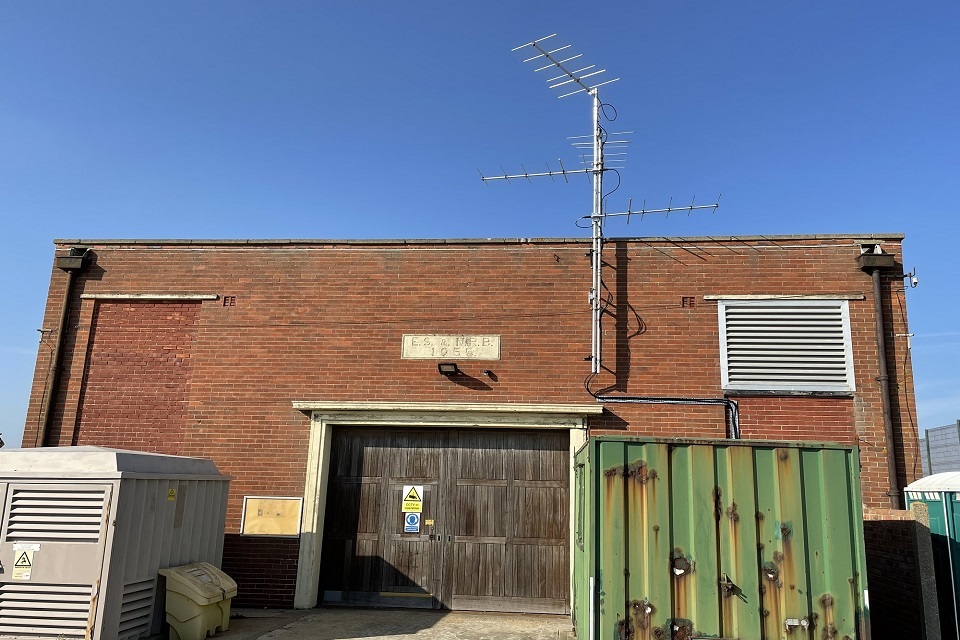Device installed to track bats at a Suffolk pumping station
The Environment Agency worked with the Norwich Bat Group to install a wildlife receiver station at Benacre Pumping Station.

Officers installing the bat receiver at the pumping station.
The device is used to track the flights and migration patterns of bats and birds across the North Sea. It is one of many that make up a network of these devices, which have been installed along the East Anglian and European coastlines.
The data produced by the receiver will be analysed by Wageningen University as part of their studies into migrations of Nathusius’ pipistrelle bats. It will also be used by the Norwich Bat Group for the same purpose.
Adam Willis, a graduate engineer for the Environment Agency, said:
We were happy to work with the Norwich Bat Group on this and we hope the data produced from the receiver helps them conserve and protect bats and birds.

The bat antenna at Benacre pumping station in Suffolk.
Jane Harris, a national Nathusius’ pipistrelle project officer for the Norwich Bat Group, said:
The installation would not have been possible without the help and support from the Environment Agency.
Thanks to them, we have gained another receiver in the East Anglian array. This will help provide valuable information about the poorly understood seasonal movements of Nathusius’ pipistrelle in the region.
Several British bird observatories have receivers too, including Landguard Bird Observatory in Felixstowe and Minsmere Nature Reserve in Suffolk.
Additional information
- The antennae and receiver mounted on the pumping station receive signals from tiny radio tags that are attached to bats and birds to track their movements.
- Radio tagging is done by the Norwich Bat Group under licence with strict welfare considerations.
- The tags are attached between the shoulder blades with medical glue and will fall off after 2 to 3 weeks.
- Large butterflies and dragonflies can also be tracked.
- The equipment was funded by Wageningen University and installed by members of Norwich Bat Group
- The information gathered by receivers, like the one installed at Benacre Pumping Station, is fed into the Motus Wildlife Tracking System, which is a global database of animal detections.
- The Motus Wildlife Tracking System is used to track tagged birds, bats and other species using radio telemetry. It is a global system and is maintained by Birds Canada.